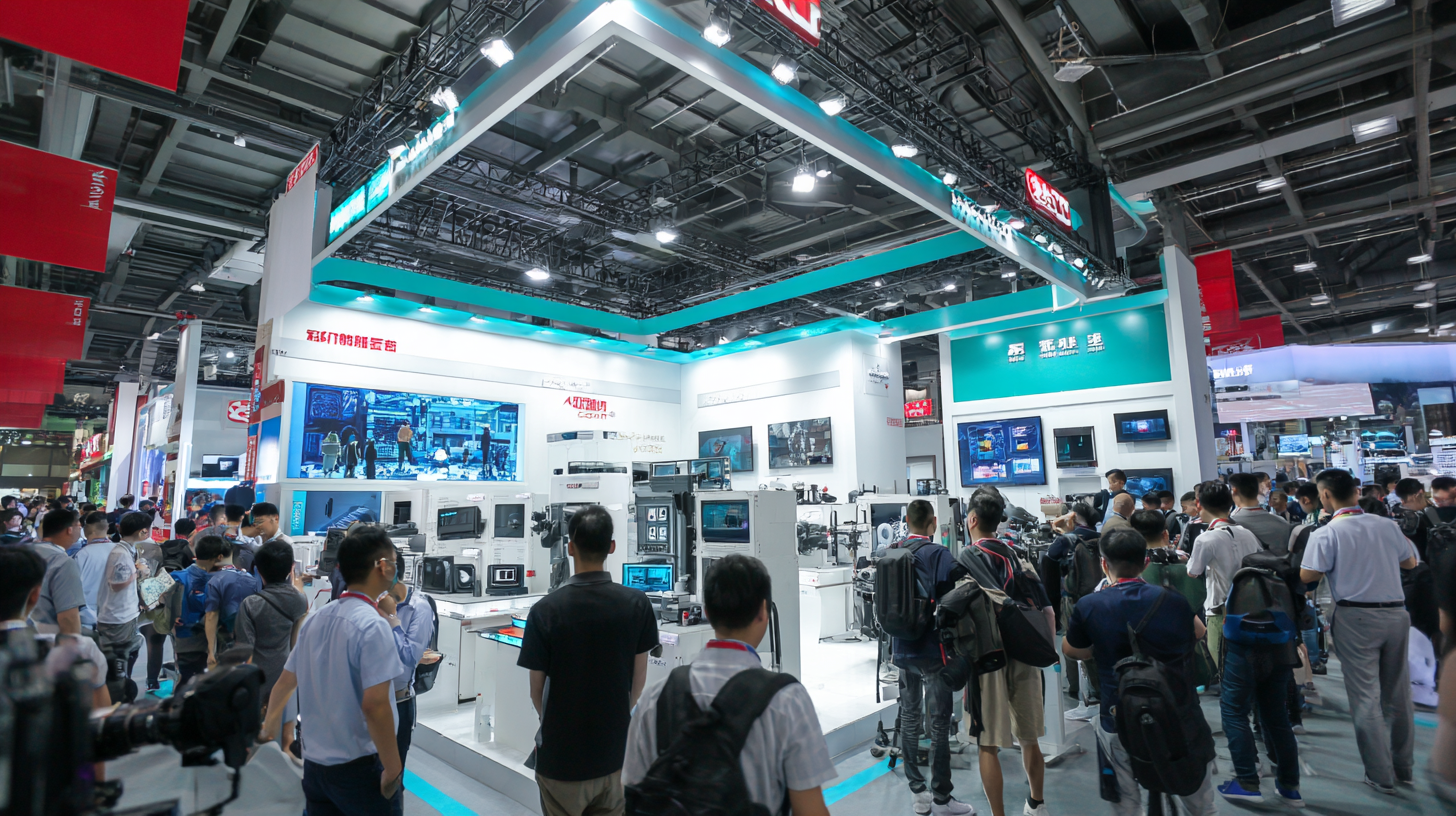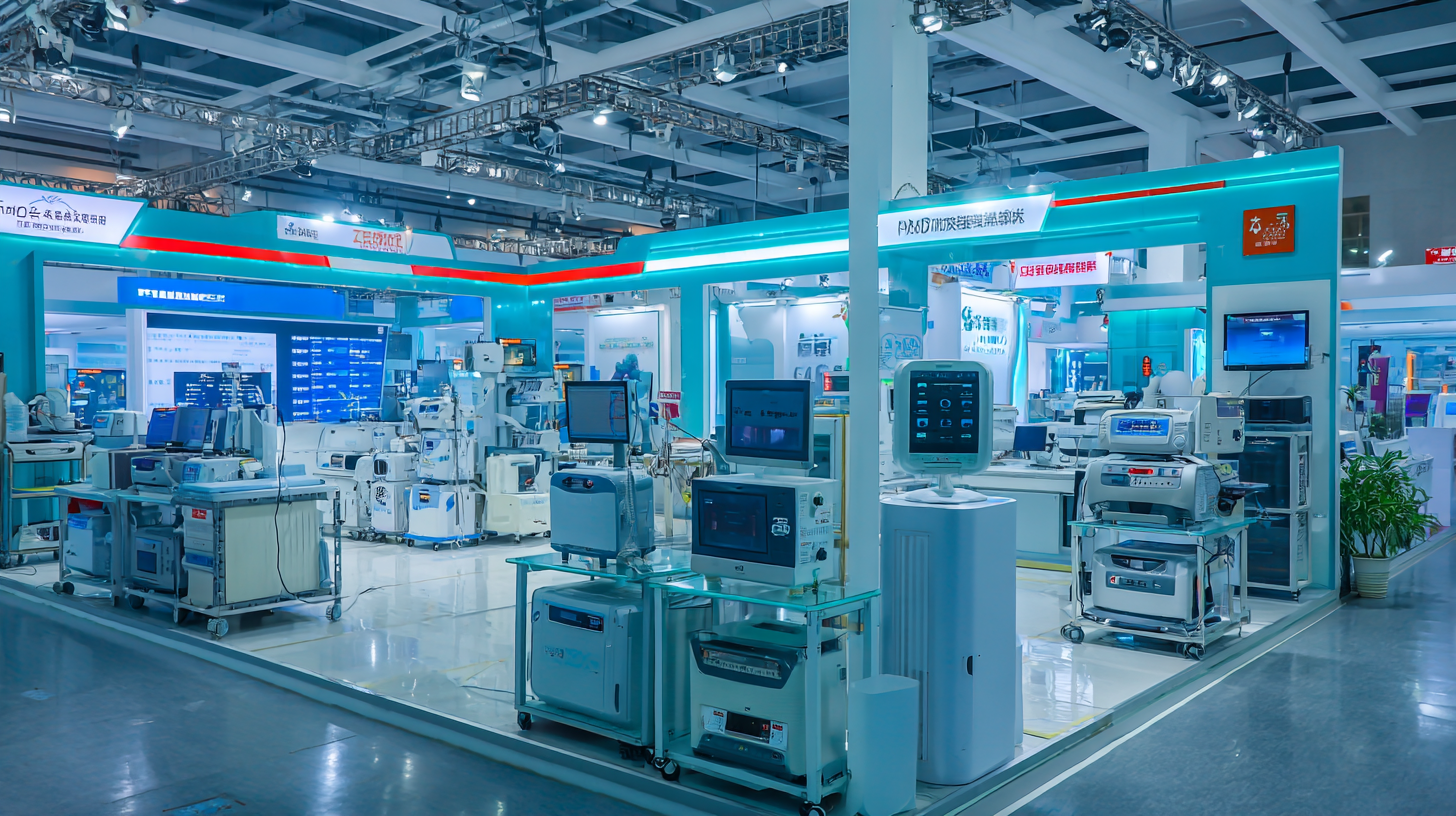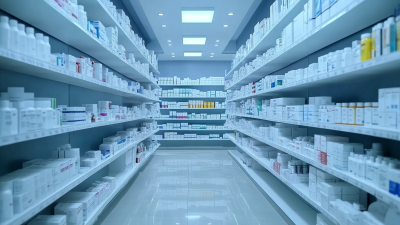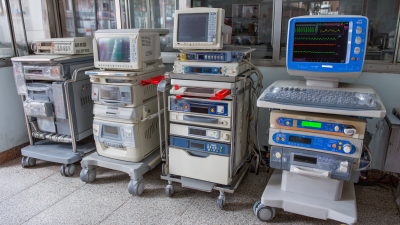Exploring Industry Trends at the 2025 China Import and Export Fair for Medical Equipment Store Insights
The 2025 China Import and Export Fair, also known as the Canton Fair, is poised to be a pivotal event for stakeholders in the medical equipment sector, particularly for Medical Equipment Store operators. With the global medical equipment market projected to reach USD 660 billion by 2025, according to a report by Global Market Insights, the significance of such fairs cannot be overstated. As consumer preferences shift towards advanced medical devices and home healthcare solutions, businesses at the fair will showcase cutting-edge technologies and innovative products that cater to emerging market demands. Additionally, participants will gain crucial insights into industry trends, regulatory advancements, and competitive strategies that could enhance their market presence. This event will serve as a significant platform for networking and collaboration, as well as a valuable opportunity to explore potential partnerships and investment in the rapidly evolving landscape of the medical equipment industry.

Impact of Technological Advancements on Medical Equipment at the 2025 China Import and Export Fair
At the 2025 China Import and Export Fair, technological advancements are set to redefine the landscape of the medical equipment industry. Reports indicate that by 2025, the global market for medical devices is projected to reach approximately $600 billion, growing at a compound annual growth rate (CAGR) of 5.4% from 2021. This surge is primarily driven by the integration of artificial intelligence, Internet of Things (IoT), and robotics into medical technology, enhancing diagnostic accuracy and patient care efficiency.
Moreover, the fair is expected to showcase cutting-edge innovations, such as advanced imaging systems and telemedicine solutions, which are becoming increasingly vital in addressing the rising demand for remote healthcare services. According to a recent industry analysis, telehealth services alone are anticipated to grow by over 25% annually through 2027, suggesting that companies focusing on these areas will have significant competitive advantages. As stakeholders gather at this premier event, the emphasis on technological progression highlights a transformative period in medical equipment, promising enhanced patient outcomes and streamlined healthcare operations.

Analysis of Medical Equipment Market Growth: Trends and Projections for 2025 and Beyond
The medical equipment market is poised for significant growth in the coming years, with notable trends emerging across various regions. The global diabetes drug market is expected to expand remarkably, projected to rise from $88.32 billion in 2024 to $238.4 billion by 2032, reflecting a compound annual growth rate (CAGR) of 12.7%. This growth is indicative of the increasing prevalence of diabetes and the heightened demand for effective treatment options, impacting the medical equipment landscape as advancements in diagnostics and monitoring tools continue to evolve.
Additionally, the global critical care equipment market is anticipated to grow substantially, with projections indicating a market size of $853.31 million in 2025 and reaching $1.22 billion by 2033. This segment's expansion is driven by the growing number of patients requiring intensive care and the continuous innovations in critical care technologies. In regions like Japan and Brazil, medical equipment markets are also expected to see healthy expansion, with Japan forecasted to rise from $41.36 billion in 2025 to $64.4 billion in 2032 (CAGR of 6.5%), and Brazil from $16.15 billion to $25 billion (CAGR of 6.4%). Collectively, these trends indicate a robust trajectory for the medical equipment industry, aligning with the projected needs of healthcare systems worldwide.
Sustainability and Innovation: Key Factors Reflecting in Medical Equipment Industry Trends
At the 2025 China Import and Export Fair, the medical equipment industry showcased the pivotal roles of sustainability and innovation in shaping current trends. As healthcare systems around the world prioritize eco-friendly practices, manufacturers are increasingly adopting sustainable materials and processes. From biodegradable packaging to energy-efficient devices, these advancements not only minimize environmental impact but also resonate with today's eco-conscious consumers.
**Tips**: When evaluating medical equipment options, consider those brands that prioritize sustainability. Look for certifications and reports that highlight their environmental efforts, which can contribute to a greener healthcare practice.
Additionally, innovation remains a driving force in the medical equipment sector. Emerging technologies, such as artificial intelligence and telemedicine solutions, are revolutionizing patient care and operational efficiency. As these technologies evolve, they offer healthcare providers new ways to enhance treatment outcomes and improve patient engagement.
**Tips**: Stay informed about the latest technological advancements in medical equipment by attending industry fairs and following reputable industry news. Engaging with thought leaders on platforms like LinkedIn can also provide insights into upcoming trends and innovations.
Trends in the Medical Equipment Industry (2025)
This chart illustrates the key trends influencing the medical equipment industry in 2025, focusing on sustainability initiatives and innovations.
Consumer Preferences and Demand Shifts: Insights from the 138th Canton Fair for Medical Equipment
As we delve into consumer preferences and demand shifts in the medical equipment sector, insights from the recent 138th Canton Fair reveal significant trends. With a notable rise in healthcare awareness and technological advancements, attendees observed a surge in interest towards portable medical devices. Innovations such as multifunctional patient monitors and video laryngoscopes exemplify the industry’s move towards precision and efficiency.
Tips: To tap into current market trends, businesses should focus on user-friendly designs and scalability of their products. Engaging with healthcare professionals during expos like the Canton Fair can provide valuable feedback that can lead to product improvements. Additionally, understanding the impact of tariffs on supply chains can help companies strategize better for international markets.
Moreover, the ongoing trade dynamics, particularly concerning US tariffs on medical imports, could reshape consumer preferences. As companies pivot to adapt to these changes, they should consider leveraging local manufacturing to maintain competitiveness. This shift might not only help in reducing costs but also enhance responsiveness to evolving consumer demands.
Exploring Industry Trends at the 2025 China Import and Export Fair for Medical Equipment Store Insights
| Product Category | Consumer Preference (%) | Demand Shift (Year-over-Year %) | Key Drivers of Demand |
|---|---|---|---|
| Diagnostic Equipment | 35% | 8% | Technological Advancements |
| Therapeutic Devices | 27% | 5% | Rising Health Awareness |
| Monitoring Equipment | 22% | 10% | Aging Population |
| Surgical Instruments | 16% | 4% | Innovations in Surgical Procedures |
| Patient Management Software | 15% | 12% | Shift to Digital Health |
Regulatory Changes and Their Effects on Medical Equipment Trade Dynamics in 2025
2025 China Import and Export Fair has become a pivotal point for stakeholders in the medical equipment industry, especially with the recent regulatory changes altering trade dynamics. According to a report from the Global Market Insights, the medical device market in China is projected to reach $82 billion by 2025, a substantial increase influenced by improved regulatory frameworks and policies aimed at promoting innovation and simplifying approval processes. These changes have created a more conducive environment for foreign manufacturers looking to enter the Chinese market, thereby enhancing competition and fostering growth.
The regulatory landscape is evolving, with new standards introduced by the National Medical Products Administration (NMPA), affecting product registration and compliance requirements. Research from McKinsey indicates that compliance time for medical devices has decreased by nearly 30% since the implementation of these reforms. This reduction not only expedites market entry for new devices but also encourages local manufacturers to scale production. Ultimately, understanding these regulatory shifts is crucial for businesses looking to navigate the complexities of medical equipment trade effectively, ensuring they remain competitive in a rapidly growing market.

Related Posts
-

How to Choose the Right Medical Supply Company for Your Business Needs
-

Unlocking Enhanced Patient Care with Advanced Hospital Equipment Benefits
-

What is the Role of a Medical Supply Company in Global Healthcare Solutions
-

Ultimate Resource for Global Buyers in Medical Equipment Procurement
-

Unlocking Cost Savings: How Global Procurement of Surgical Supplies Can Transform Healthcare Efficiency
-

5 Best Practices for Buying Used Medical Equipment: A Comprehensive Guide
